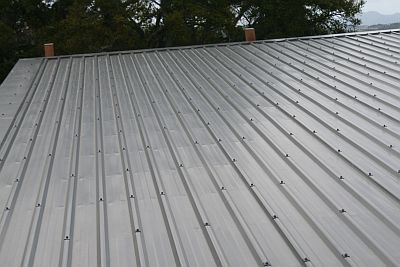Due to improvements in colour coating technology, the level of reflection and retention of gloss is higher. It will become much less obvious over time as gloss levels diminish and dirt accumulates on the roof.
Overdriven nails or screws can produce visible distortion on the purlin line in the pan of trapezoidal profiles that cannot be easily remedied.
It is the responsibility of the roofing contractor to ensure that nails are not overdriven. A nail or screw should only be driven into the purlin to produce a 50% compression of the sealing washer or until the roof is firm.
Before fixing the roof cladding, the contractor should check the alignment of the purlins or girts. Purlins should be aligned within 5 mm tolerance of each other to avoid purlin creasing.
Purlins should be accurately positioned with their top face parallel to the rafter and should be fixed to a straight line.
When appearance is important or where wide pan trapezoidal cladding is close to eye level, heavier gauge cladding should be specified because light gauges such as 0.4 mm steel and 0.7 mm aluminium are likely to show distortion. Purlin creasing will happen on both concave and convex curved roofs if the recommended purlin spacings are exceeded, and great care should be taken to align purlins on such roofs.
Purlin creasing can be exacerbated by roof traffic. 14.5 Walking On Roofs
All trapezoidal and secret fix profiles will exhibit purlin creasing to some degree. The extent to which it is visible depends greatly on the line of sight and light conditions. These can change it from being immediately obvious to almost invisible. Purlin creasing can be minimised by design by specifying 0.55 mm, rather than 0.40 mm material, or selecting a profile with a narrower pan. Minimising roof traffic on G300 tray roofing will also help, but the only way to ensure that purlin creasing will not be an issue is to lay a roof on solid sarking, or by using a corrugate profile.
A printable bulletin is available at: PC01 Purlin Creasing or Print-Through
Exctract:
"Purlin creasing is similar to canning, except that the distortion in the pan occurs along the purlin lines
rather than in a random pattern. It can also be referred to as print-through. The cause is often hard to
diagnose..."

